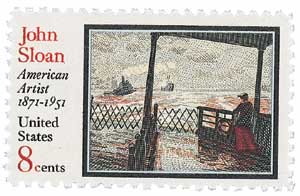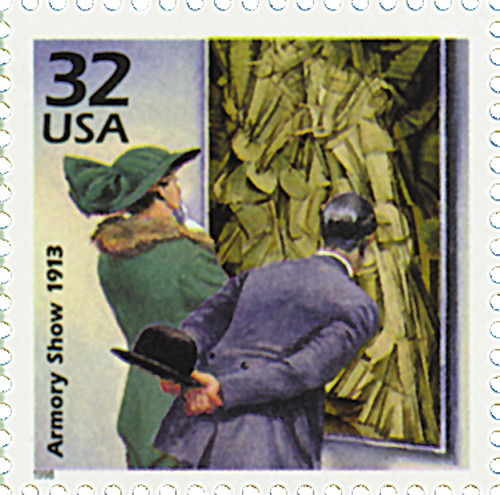
# 3183d FDC - 1998 32c Celebrate the Century - 1910s: Armory Show
32¢ Armory Show
Celebrate the Century – 1910s
City: Washington, DC
Quantity: 12,533,000
Printed By: Ashton-Potter (USA) Ltd
Printing Method: Lithographed
Perforations: 11.5
Color: Multicolored
Birth Of John Sloan
Sloan grew in up Philadelphia, Pennsylvania, where he and his sisters were encouraged to draw and paint from an early age. While he was in high school, Sloan’s father suffered a mental breakdown and he chose to leave school to work full time to support his family.
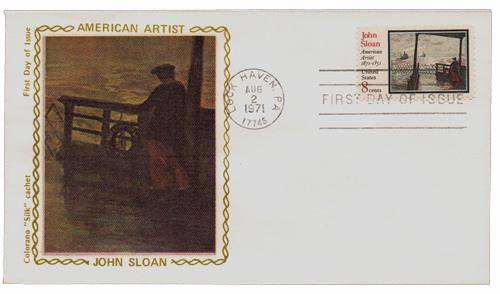
Sloan worked in a book and art store where he had lots of free time to read and enjoy art. While there, he created some of his earliest surviving works, including his own versions of paintings by Albrecht Dürer and Rembrandt. Sloan also produced his own etchings that he sold in the store. Sloan was then hired by a stationary store, where he designed greeting cards and calendars and continued to produce etchings. While working there, he began taking night art classes.
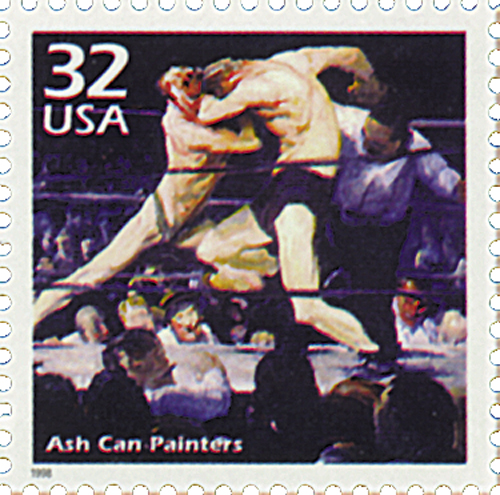
Eventually, Sloan left the store hoping to find work as a freelance commercial artist, but it didn’t provide him with enough money. So in 1892, he took a job as an illustrator for The Philadelphia Inquirer. Sloan also started taking classes at the Pennsylvania Academy of Fine Arts. That same year, he met artist Robert Henri, who encouraged him to start painting. Years later, they created the Ashcan school of American art. The Ashcan school was largely known for creating images of daily life in New York City, particularly in the poorest neighborhoods.
After getting married in 1901, Sloan and his wife moved to New York City in 1904. These early years in New York saw the creation of some of his greatest art, but he failed to sell many paintings. To supplement his income, he worked as a freelancer for The Philadelphia Press. Sloan also provided illustrations for books and journals.
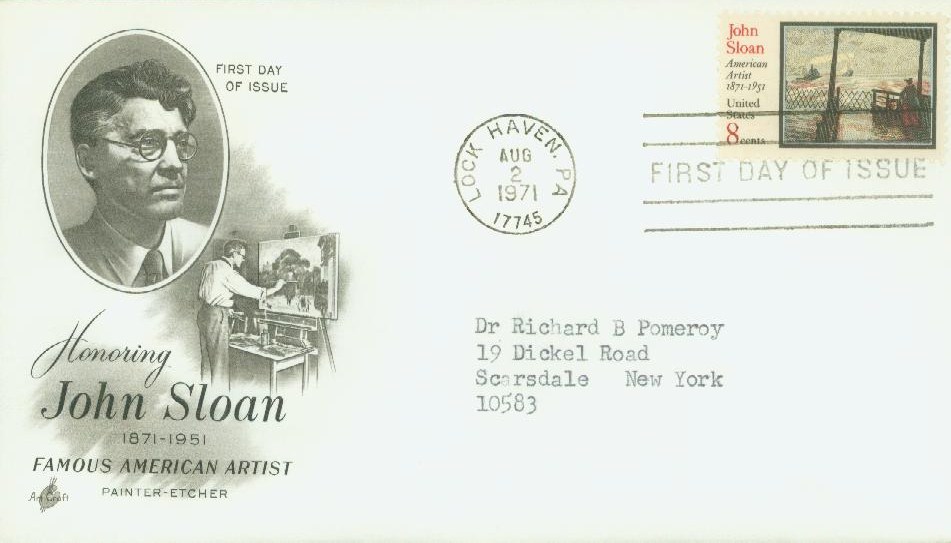
In 1908, Sloan took part in a major exhibition at the Macbeth Galleries. He and the other seven artists became known as The Eight. Sloan then took the exhibition on the road, speaking about the value of less academic approaches to art and the new types of subject matter it could include.
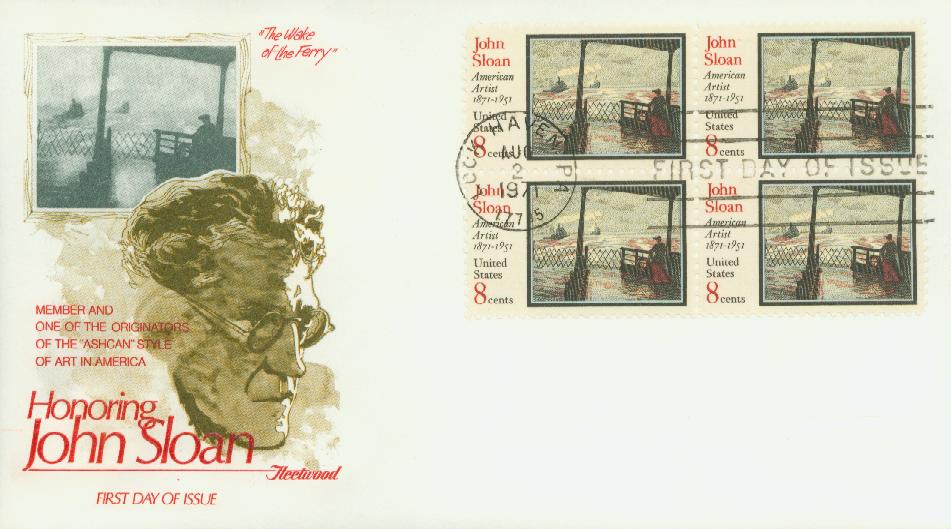
In 1910, Sloan became involved with the Socialist Party and served as the art editor of The Masses. He provided that and other magazines with anti-war and anti-capitalist drawings. Sloan eventually left the magazine over a dispute with the other editors. In 1913, he created a 200-foot backdrop for the Paterson Strike Pageant, a performance piece for the striking silk mill workers of Paterson, New Jersey.
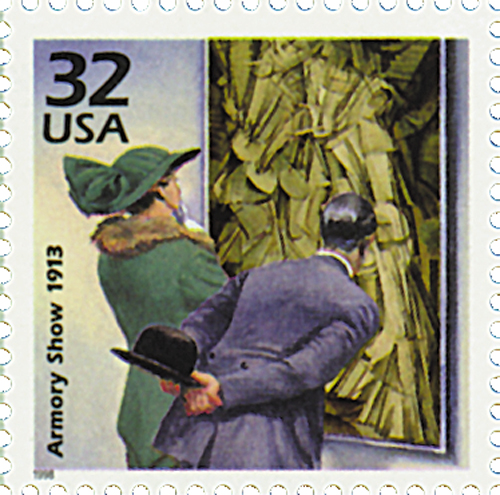
Also in 1913, Sloan took part in the famed Armory Show. He was a part of the organizing committee and exhibited two paintings and five etchings. Sloan was strongly influenced by the modernist European works he saw at the show and he soon began to move away from the realist urban art he’d produced for the last 10 years. He started painting plain air landscapes influenced by Vincent Van Gogh and Fauvism.
In 1914, Sloan began teaching at the Art Students League, where he would remain for 18 years. Sloan had only sold a handful of paintings up to this time and told his students “I have nothing to teach you that will help you make a living.” He discouraged trying to make a living off of art but encouraged his students to find joy in the creative process.
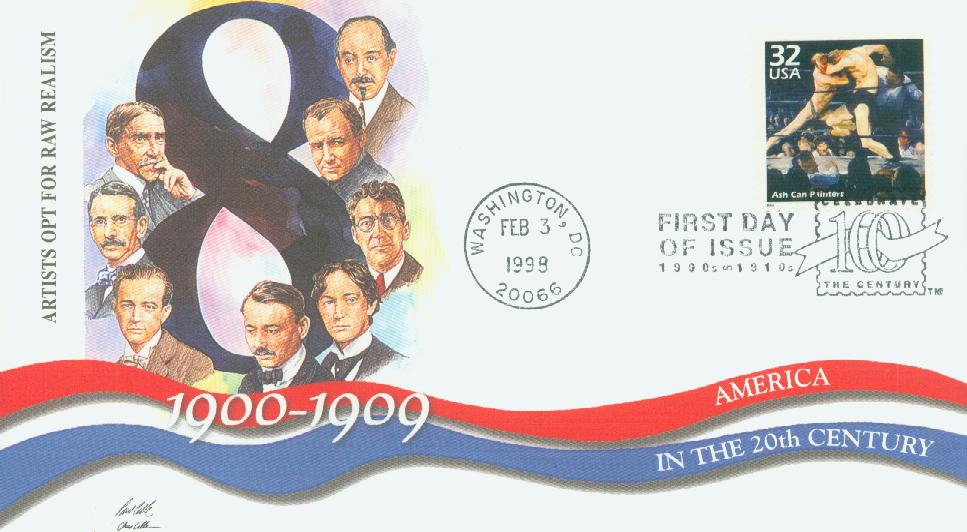
Beginning in 1918, Sloan would spend every summer for 30 years painting in Sante Fe, New Mexico. His time there sparked an interest in Native American art and he arranged an exhibition of their art in New York City in 1922. Sloan also helped found the Society of Independent Artists, which hosted the first US shows of Diego Rivera and José Clemente Orozco.
Sloan continued to paint until his death on September 7, 1951.
Click here to view some of Sloan’s art.
32¢ Armory Show
Celebrate the Century – 1910s
City: Washington, DC
Quantity: 12,533,000
Printed By: Ashton-Potter (USA) Ltd
Printing Method: Lithographed
Perforations: 11.5
Color: Multicolored
Birth Of John Sloan
Sloan grew in up Philadelphia, Pennsylvania, where he and his sisters were encouraged to draw and paint from an early age. While he was in high school, Sloan’s father suffered a mental breakdown and he chose to leave school to work full time to support his family.

Sloan worked in a book and art store where he had lots of free time to read and enjoy art. While there, he created some of his earliest surviving works, including his own versions of paintings by Albrecht Dürer and Rembrandt. Sloan also produced his own etchings that he sold in the store. Sloan was then hired by a stationary store, where he designed greeting cards and calendars and continued to produce etchings. While working there, he began taking night art classes.

Eventually, Sloan left the store hoping to find work as a freelance commercial artist, but it didn’t provide him with enough money. So in 1892, he took a job as an illustrator for The Philadelphia Inquirer. Sloan also started taking classes at the Pennsylvania Academy of Fine Arts. That same year, he met artist Robert Henri, who encouraged him to start painting. Years later, they created the Ashcan school of American art. The Ashcan school was largely known for creating images of daily life in New York City, particularly in the poorest neighborhoods.
After getting married in 1901, Sloan and his wife moved to New York City in 1904. These early years in New York saw the creation of some of his greatest art, but he failed to sell many paintings. To supplement his income, he worked as a freelancer for The Philadelphia Press. Sloan also provided illustrations for books and journals.

In 1908, Sloan took part in a major exhibition at the Macbeth Galleries. He and the other seven artists became known as The Eight. Sloan then took the exhibition on the road, speaking about the value of less academic approaches to art and the new types of subject matter it could include.

In 1910, Sloan became involved with the Socialist Party and served as the art editor of The Masses. He provided that and other magazines with anti-war and anti-capitalist drawings. Sloan eventually left the magazine over a dispute with the other editors. In 1913, he created a 200-foot backdrop for the Paterson Strike Pageant, a performance piece for the striking silk mill workers of Paterson, New Jersey.

Also in 1913, Sloan took part in the famed Armory Show. He was a part of the organizing committee and exhibited two paintings and five etchings. Sloan was strongly influenced by the modernist European works he saw at the show and he soon began to move away from the realist urban art he’d produced for the last 10 years. He started painting plain air landscapes influenced by Vincent Van Gogh and Fauvism.
In 1914, Sloan began teaching at the Art Students League, where he would remain for 18 years. Sloan had only sold a handful of paintings up to this time and told his students “I have nothing to teach you that will help you make a living.” He discouraged trying to make a living off of art but encouraged his students to find joy in the creative process.

Beginning in 1918, Sloan would spend every summer for 30 years painting in Sante Fe, New Mexico. His time there sparked an interest in Native American art and he arranged an exhibition of their art in New York City in 1922. Sloan also helped found the Society of Independent Artists, which hosted the first US shows of Diego Rivera and José Clemente Orozco.
Sloan continued to paint until his death on September 7, 1951.
Click here to view some of Sloan’s art.






